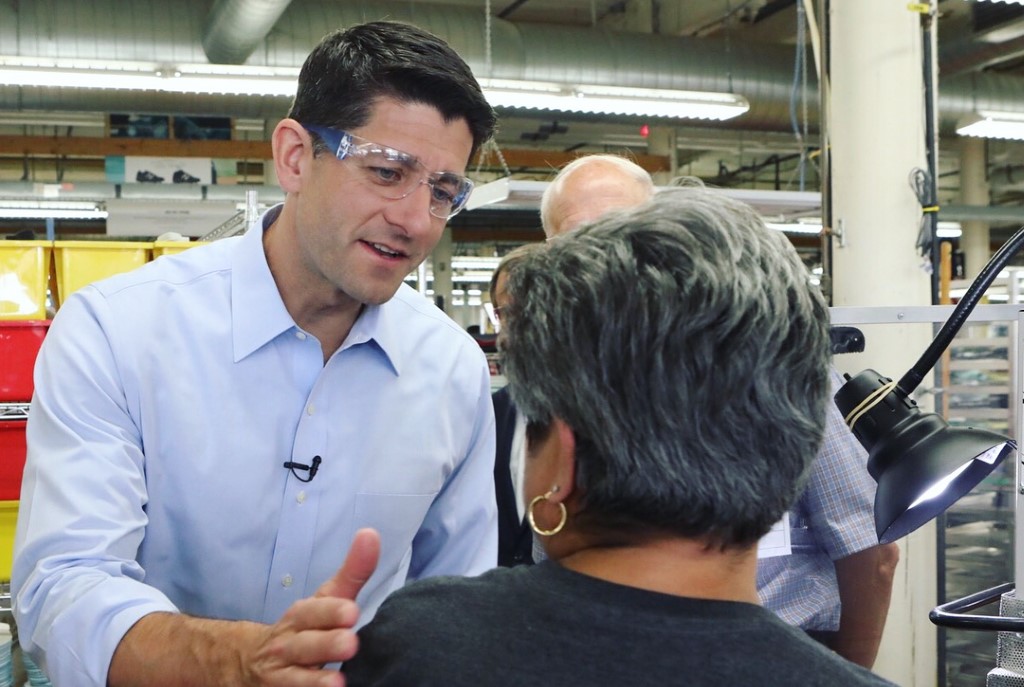Ryan’s 20-Year Tenure Typical for State
House members from Wisconsin average 16 years in office, nearly double the national average.
U.S. House Speaker Paul Ryan’s surprise retirement after 20 years in Congress surfaced this obscure fact about Wisconsin politics: When someone is elected to the House from Wisconsin, they often spend a long time there.
A review of the tenures of 30 current and former U.S. House members from Wisconsin showed they served an average of 16 years, or eight terms. That’s much longer than the average longevity – 9.1 years – of all House members in 2013, according to a report from the Congressional Research Office.
And it’s both Democrats and Republicans who, once Wisconsin voters send them to the U.S. House, spend their whole career there. “Longevity in office appears not to be a partisan issue,” said UW-Madison Political Science Professor Barry Burden.
Others who served more than 30 years in the U.S. House from Wisconsin:
Fifth District Republican James Sensenbrenner, who is in his 39th year and plans to seek re-election in November; former 6th District Republican Tom Petri, 36 years (1979-2015), former 4th District Democrat Clement Zablocki, 34 years (1949-1983) and former 2nd District Democrat Robert Kastenmeier, 32 years.
Sensenbrenner, 74 years old, is the dean of Wisconsin’s Congressional delegation and mentored Ryan and younger Republicans like 7th District Rep. Sean Duffy, who is in his eighth year in the House, first-term 8th District Rep. Mike Gallagher and former 8th District Rep. Reid Ribble (2011-17)
For decades, Sensenbrenner and Obey negotiated boundaries of the new, post-Census districts of House members from Wisconsin, then gave the maps to state legislators to pass and to governors to sign into law.
Former 2nd District Republican Rep. Scott Klug served eight years in the House (1991-1999). He ousted Democrat Kastenmeier, who served from 1959 until 1991.
Klug said the long tenures of only a few House members “skewed” the average for all U.S. House members from Wisconsin. Ten of the 30 whose careers were measured served 20 years or more, for example.
Klug was surprised at the 16-year average. He thought the average would be about seven years because, “There’s a classic cutoff between six and seven years where people go ‘up or out’.”
Three U.S. House members from northeast Wisconsin only served one two-year term: Democrat Jay Johnson, 1997-99; Republican Harold Froehlich, who lost his re-election bid after his 1974 vote to impeach then-President Richard Nixon, and Democrat LaVern Dilweg, a former Green Bay Packers player who served in the 1943-45 session.
“There is probably no special formula to longevity in Wisconsin politics, but the state has boasted a few legislators who have served exceptionally long terms in Congress,” Burden said.
There are many reasons why Wisconsin voters rarely fire their U.S. House members, often letting them – like Ryan – retire.
Reapportionment maps favor incumbents. Incumbents can more easily raise campaign cash. First-term House members who survive a re-election campaign become harder to defeat. Many voters tell pollsters they like their own member of Congress, and don’t blame them for the Washington swamp.
Klug added other advantages incumbents have: Name ID. The “countless appearances” at Rotary and Kiwanis clubs and other groups back home. Helping constituents with Social Security and other federal government problems.
“There have also been short-lived legislators from Wisconsin,” Burden noted. “The 8th District has seen regular turnover of members since the 1990s.”
Between 1943 and 2017, when Ribble retired, northeast Wisconsin’s 8th District sent nine different legislators – five Republicans and four Democrats, including priest Robert Cornell (1975-79) – to the U.S. House.
They served an average of eight years – half the average tenure for all Wisconsin House members.
Ryan started as a Congressional aide at age 22. “A remarkable fact about Ryan is that despite serving 20 years in Congress, he is only 48 years old,” Burden said.
Klug said he had expected Ryan to seek another term, win and then resign early next year. “The thinking was it would have been easier (for Republicans) to win a special election next year than this November,” Klug added. But Ryan had other ideas.
Steven Walters is a senior producer for the nonprofit public affairs channel WisconsinEye. Contact him at stevenscotwalters@gmail.com
The State of Politics
-
A Wisconsin Political Trivia Quiz
 Dec 15th, 2025 by Steven Walters
Dec 15th, 2025 by Steven Walters
-
The Fight Over Wisconsin’s House Districts
 Dec 8th, 2025 by Steven Walters
Dec 8th, 2025 by Steven Walters
-
The Battle Over On-Line Betting
 Nov 24th, 2025 by Steven Walters
Nov 24th, 2025 by Steven Walters


















Their tenures are twice the average length because Wisconsin keeps electing no talent assclown republicans who, like Career Politician Ryan or Career Politician Scott Walker, have absolutely no skills or abilities outside of mooching off the government and corporations. So of course they become Career Politicians! Good riddance to Trump Toady #1 Paul Ryan! Now let’s DUMP the rest of these Big Government mooching
Corporate sell out Republican idiots in Wisconsin in November starting with corrupt, lying, cheating Trump Toady Scott Walker!
Dump Walker 2018!